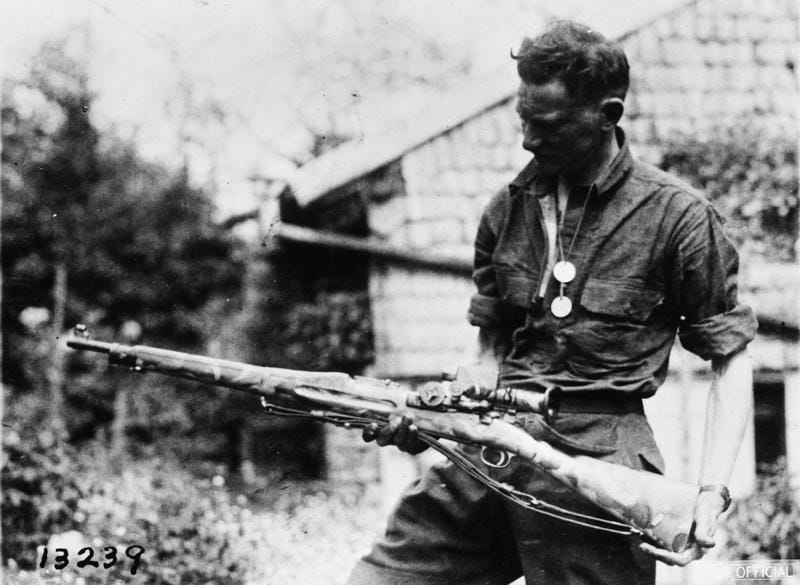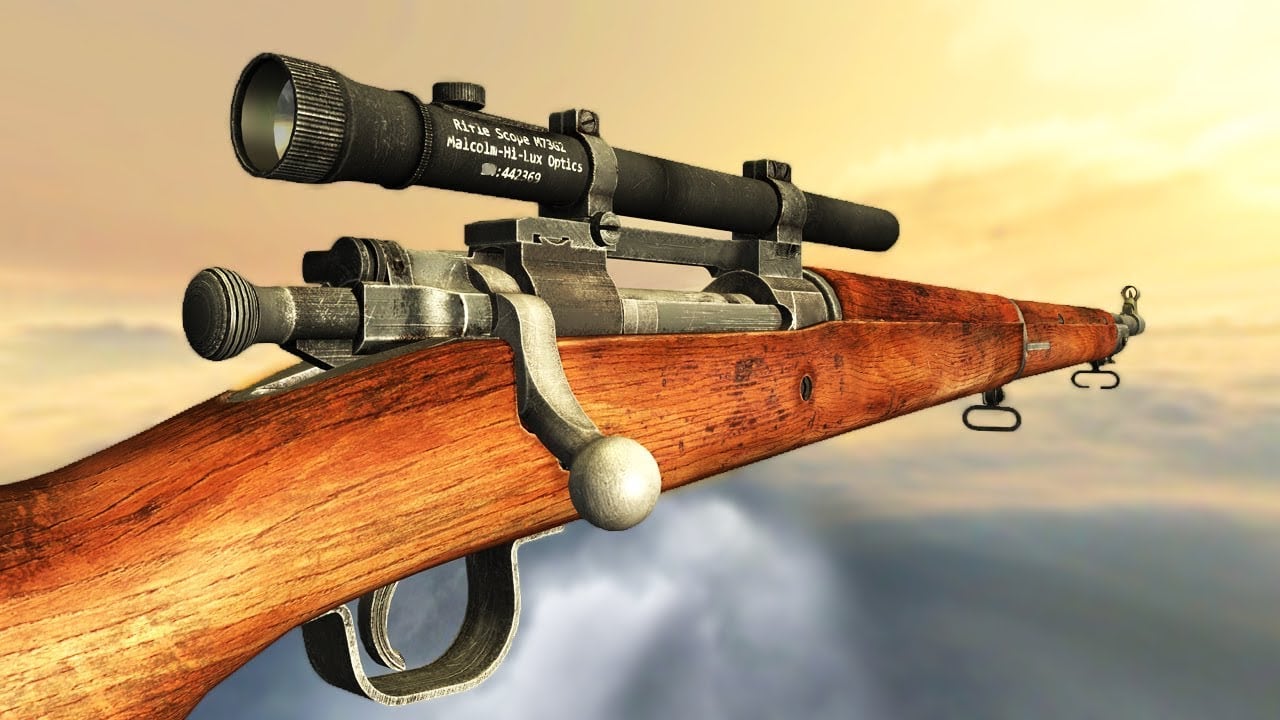Meet the M1903: Even when the M1 Garand officially replaced the M1903 as the official standard-issue infantry rifle of the U.S. Armed Forces, that did not mean that the bolt-action rifle’s own military career was over.
Last year, I wrote an article for 19FortyFive titled “The 5 Best U.S. Military Firearms Of All-Time.” Amongst those five firearms, I included two 20th century rifles, the M1 Garand – which was America’s first standard-issue autoloading rifle – and the M1903 Springfield, which was the bolt-action rifle that preceded it.
The Springfield may not have been dubbed “the greatest battle implement ever devised” by General Patton like the Garand was, but, for what it’s worth, the Civilian Marksmanship Program (CMP) states unequivocally that, “The U.S. M1903 and M1903A3 ‘Springfield’ rifles are the greatest of all U.S. military issue bolt action rifles.” With that in mind, it’s time to give this rifle its individualized moment in the sun.
M1903 Early History & Specifications
The weapon was officially known in government documents as the United States Rifle, Caliber .30-06, Model 1903, and was officially adopted as standard-issue on June 19, 1903 – thus replacing the .30-40 caliber Krag-Jorgensen rifle – after being initially prototyped in 1900. Though WWI would make it famous, the rifle was actually “blooded” in combat during the Philippine-American War. It was a bolt-action repeating rifle with a 5-round internal magazine, chambered for the .30-06 cartridge, the same caliber that would be retained by the Garand.
Specifications for the Springfield include a barrel length of 24 inches, an overall length of 43.2 inches, and a weight of 8.7 pounds. It generated a muzzle velocity of 2,800 feet per second, an effective firing range of 300 yards (not counting sniper usage), and a maximum range of 5,500 yards.
The Crucible of the WWI Trenches
As noted in the overview of Leroy Thompson’s 2013 book titled “The M1903 Springfield Rifle” (pretty straightforward title, eh):
“During World War I, US troops developed a formidable reputation for marksmanship aided by the accuracy of the M1903 Springfield, which was widely used in that conflict alongside the Pattern 1917 Enfield. World War I saw the introduction of the M1903A3, which changed the rear sight so that it was closer to that of the M1 Garand, to allow easier training of troops who might be issued either rifle. The M1903A4 sniper version was used during World War I and later.”
Among the soldiers who put the Springfield to deadly good use during “The War To End All Wars” was Herbert W. McBride, who scored over 100 confirmed kills in the muddy, bloody trenches of Europe and wrote of his exploits in his classic autobiography “A Rifleman Went to War.”
Beyond the First World War
Even when the M1 Garand officially replaced the M1903 as the official standard-issue infantry rifle of the U.S. Armed Forces, that did not mean that the bolt-action rifle’s own military career was over.
After all, when the U.S. first entered into the Second World War, there wasn’t a sufficient supply of M1 rifles to arm all troops, so the existing stock of M1903s was used to fill in the gaps. (This is somewhat akin to how M1917 .45 ACP revolvers were used in the First World War to address the shortage of M1911 semiautomatic .45 ACP pistols for field issue.) Even when the Garands did become more widely available to mainline infantry troops, the bolt-action Springfield fought on in that war as a sniper rifle, as dramatized by Barry Pepper’s Private Jackson character in “Saving Private Ryan.”
The Springfield continued to prove itself in the sniping role during the Korean War and even the Vietnam War, finally officially relinquishing the role around circa 1975. The rifles then found a new lease on life as ceremonial rifles for veterans’ organizations such as Veterans of Foreign Wars (VFW), American Legion (AL), and Disabled American Veterans (DAV) to name a few.
Want Your Own?
Genuine vintage M1903s are getting harder and harder to find, and CMP states explicitly in boldface font on their website that “We do not expect to ever again receive large quantities of these models. Currently, M1903 and M1903A3 models are not available, and CMP is not accepting orders.”

Camouflaged M1903 Springfield sniper’s rifle with Warner & Swasey telescopic sight, in France, May 1918.
Christian D. Orr has 33 years of shooting experience, starting at the tender age of 14. His marksmanship accomplishments include: the Air Force Small Arms Ribbon w/one device (for M16A2 rifle and M9 pistol); Pistol Expert Ratings from U.S. Customs & Border Protection (CBP), Immigration & Customs Enforcement (ICE), and the Federal Law Enforcement Training Center (FLETC) Criminal Investigator Training Program (CITP); multiple medals and trophies via the Glock Sport Shooting Foundation (GSSF) and the Nevada Police & Fires Games (NPAF). Chris has been an NRA Certified Basic Pistol Instructor since 2011.
From the Vault
‘You Really Oughta Go Home’: F-22 Raptor Stealth Fighter Flew Under F-4 From Iran

